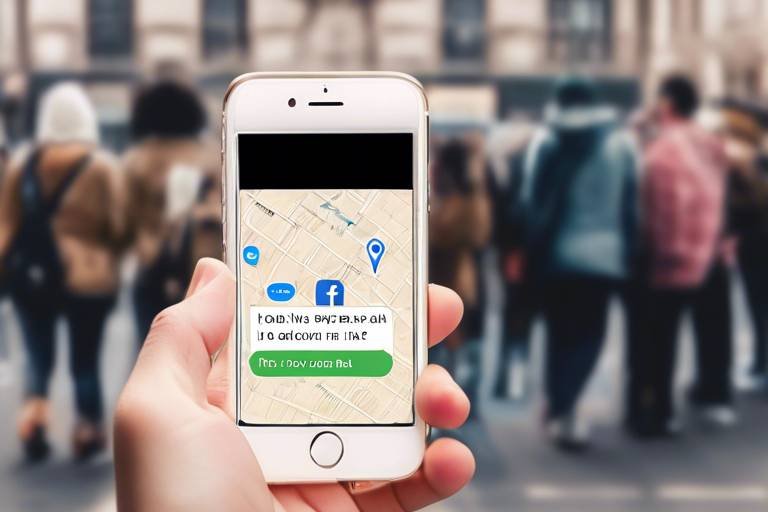How to Keep Young Children Safe on Social Media?
In today's digital age, social media is as common as the morning cup of coffee. It’s where kids connect, share, and explore. However, it’s also a playground filled with potential dangers. As a parent, you might be wondering, "How can I protect my little ones while allowing them to enjoy the benefits of social media?" The answer lies in understanding the landscape, setting clear guidelines, and fostering open communication. Let’s dive into practical strategies that can help ensure your children navigate social media safely while having an enjoyable online experience.
First things first: it’s essential to recognize the various risks associated with social media. Think of it as a vast ocean; while there are beautiful treasures to discover, there are also hidden dangers lurking beneath the surface. Some of the most common risks include:
- Cyberbullying: This can take many forms, from hurtful messages to exclusion from online groups. It’s crucial that children understand the impact of their words and actions.
- Exposure to Inappropriate Content: The internet can be a wild west of content, and not all of it is suitable for young eyes. From explicit material to violent imagery, the risks are real.
- Privacy Issues: Children may not fully grasp the importance of keeping their personal information private, which can lead to unwanted attention or even dangerous situations.
By being aware of these risks, parents can better prepare to guide their children through the complexities of social media.
Setting clear guidelines for social media use is like building a sturdy fence around your yard. It helps children understand what’s acceptable and what’s not. Here are some key points to consider:
- Define time limits for social media use to prevent excessive screen time.
- Discuss what types of content are appropriate to share and engage with.
- Encourage children to think before they post, reminding them that once something is online, it’s often permanent.
By establishing these boundaries, you empower your children to make safer choices online.
Choosing the right social media platforms for your children is crucial. Just like you wouldn’t let a toddler roam freely in a crowded mall, you shouldn’t allow them to use platforms meant for older users. Age-appropriate platforms create a safer environment where kids can interact with peers without the risks associated with adult-oriented sites. Popular platforms that cater specifically to children include:
| Platform | Age Group | Features |
|---|---|---|
| Kidzworld | 8-16 | Safe chat, games, and forums. |
| PopJam | 7-12 | Creative sharing and a focus on art. |
| Gryphon Safe | All Ages | Parental controls and monitoring features. |
These platforms are designed to foster creativity and social interaction while minimizing risks, making them ideal for young users.
Regularly monitoring your child's social media usage is like keeping an eye on them at the playground. It allows you to stay informed about their online activities and helps identify any potential issues early on. Consider using parental control tools that can provide insights into your child's online behavior without invading their privacy. It’s a delicate balance, but one that’s crucial for their safety.
Creating an environment where your child feels comfortable discussing their online experiences is vital. Ask them about their interactions and encourage them to share both positive and negative experiences. This open dialogue can help you address concerns before they escalate. Remember, kids are more likely to come to you with problems when they know you’re not going to overreact.
In a world overflowing with information, teaching children about digital literacy is like giving them a map in an unfamiliar city. It empowers them to critically evaluate online content, recognize misinformation, and make informed decisions. Start by discussing the importance of verifying sources before sharing information.
Helping kids identify fake news is essential in developing their critical thinking skills. Encourage them to ask questions like, "Who created this content?" or "Is this information backed by credible sources?" By fostering this kind of critical thinking, you’re equipping them to navigate the digital landscape more effectively.
Educating children about privacy settings on social media platforms is another critical aspect of keeping them safe. Show them how to adjust their settings to control who can see their posts and personal information. This knowledge empowers them to protect their online identity and manage their digital footprint.
Encouraging positive online behavior is crucial for fostering a respectful digital community. Teach your children the importance of kindness and empathy in their interactions. Remind them that their words can have a significant impact on others, just like in real life.
As parents, you have the unique opportunity to model good online behavior. Demonstrate respectful communication and responsible social media use. Children often mimic their parents, so leading by example can instill these values in them.
Lastly, teach your children how to recognize and report inappropriate content. Empowering them to take action when they encounter harmful material not only makes them feel safer but also contributes to a healthier online environment for everyone.
Q: At what age should my child start using social media?
A: While there’s no one-size-fits-all answer, many platforms require users to be at least 13 years old. It’s essential to consider your child’s maturity and ability to handle online interactions.
Q: How can I monitor my child's social media without invading their privacy?
A: Open communication is key. Discuss your concerns and agree on certain boundaries. Utilize parental control tools that provide insights without being overly intrusive.
Q: What should I do if my child encounters cyberbullying?
A: Encourage your child to talk to you about it. Document the incidents, block the bully, and report the behavior to the platform. It’s crucial they know they’re not alone in this situation.
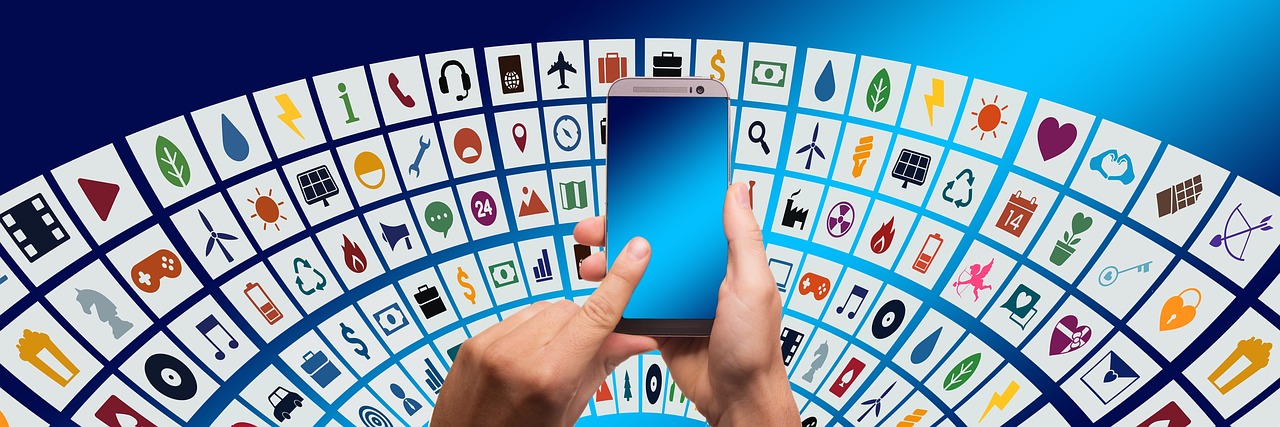
Understanding the Risks
In today's digital age, social media has become an integral part of our lives, especially for young children. However, as parents, it's essential to recognize that this online landscape is not without its dangers. The risks associated with social media can be alarming, and understanding these threats is the first step in safeguarding our children. Have you ever thought about what your child might encounter while scrolling through their favorite app? From cyberbullying to exposure to inappropriate content, the potential hazards are numerous and can have lasting impacts.
One of the most pressing concerns is cyberbullying. Unlike traditional bullying, which often has a physical presence, cyberbullying can happen 24/7, making it difficult for children to escape. The anonymity of the internet can embolden bullies, leading to severe emotional distress for the victims. It's not uncommon for children to feel isolated and powerless, which is why parents must be vigilant and proactive in addressing these issues.
Another significant risk is exposure to inappropriate content. With just a few clicks, children can stumble upon material that is not suitable for their age. This could range from explicit videos to violent images or even harmful challenges that circulate online. The internet is a vast ocean of information, and without proper guidance, children might find themselves in deep waters they can't navigate safely.
Additionally, privacy issues pose a considerable threat. Many children may not fully understand the importance of protecting their personal information. They might share too much, not realizing that once something is online, it can be nearly impossible to erase. This lack of awareness can lead to identity theft, unwanted attention, or even dangerous encounters with strangers. It's crucial for parents to educate their children about what information is safe to share and what should remain private.
In summary, while social media can offer opportunities for connection and creativity, it also comes with its share of risks. By understanding these dangers, parents can take proactive steps to mitigate them. Engaging in open conversations with your children about their online experiences, monitoring their activity, and establishing clear guidelines can significantly reduce the likelihood of negative encounters. Remember, navigating the digital world is a team effort, and with the right support, children can enjoy a safer online experience.
Here’s a quick overview of key risks associated with social media:
| Risk | Description |
|---|---|
| Cyberbullying | Harassment or bullying that occurs through digital devices. |
| Inappropriate Content | Exposure to material that is unsuitable for children. |
| Privacy Issues | Sharing personal information that can lead to security risks. |

Establishing Guidelines
In today's digital age, establishing clear guidelines for social media use is not just a good idea; it's essential for keeping young children safe online. Think of these guidelines as a roadmap that helps your children navigate the sometimes treacherous waters of social media. Without a clear path, they might wander into dangerous territory without even realizing it. So, what should these guidelines look like? Here are some key points to consider:
First and foremost, it's important to set time limits. Children can easily lose track of time while scrolling through feeds or watching videos. By establishing specific time frames for social media use, you can help them balance their online activities with other important aspects of life, such as homework, outdoor play, and family time. For instance, you might decide that 30 minutes a day is sufficient for social media engagement, allowing them to enjoy their online interactions without it consuming their entire day.
Next, discuss the type of content that is appropriate to share or engage with. It's crucial for children to understand that not everything they see online is suitable for them. Encourage them to think critically about what they post and what they engage with. For example, remind them that sharing personal information, like their address or school name, can put their safety at risk. A good rule of thumb is to ask them to consider whether they would be comfortable sharing the same content with a stranger. If the answer is no, then it’s likely not appropriate for social media.
Another vital aspect of establishing guidelines is to create a family agreement regarding social media use. This agreement can outline the rules and expectations for everyone in the household, ensuring that children understand the importance of adhering to these guidelines. You can involve your children in the creation of this agreement, making them feel more invested in following the rules. This collaborative approach can foster a sense of responsibility and ownership over their online actions.
Finally, it’s crucial to periodically review and adjust these guidelines as your children grow and their online interactions evolve. What works for a 7-year-old may not be suitable for a 12-year-old. Regular discussions about their experiences can help you gauge their understanding and comfort level with social media, allowing you to adapt the guidelines accordingly. This ongoing dialogue not only reinforces the importance of safe social media practices but also strengthens your relationship with your children, making them more likely to come to you with any concerns or questions they might have.
In conclusion, establishing guidelines for social media use is a proactive step in safeguarding your children online. By setting clear expectations regarding time limits, content sharing, and creating a family agreement, you can foster a safer and more positive online experience for your young ones. Remember, the goal is to empower them with the knowledge and tools they need to navigate social media responsibly.
- What age should my child start using social media? - It's generally recommended that children under the age of 13 should avoid social media due to privacy concerns and the potential for exposure to inappropriate content.
- How can I monitor my child's social media use without invading their privacy? - Open communication is key. Discuss your concerns with your child and agree on a method of monitoring that respects their privacy while keeping them safe.
- What should I do if my child encounters cyberbullying? - Encourage your child to come to you immediately if they experience or witness cyberbullying. Discuss the situation, document the evidence, and report it to the platform.
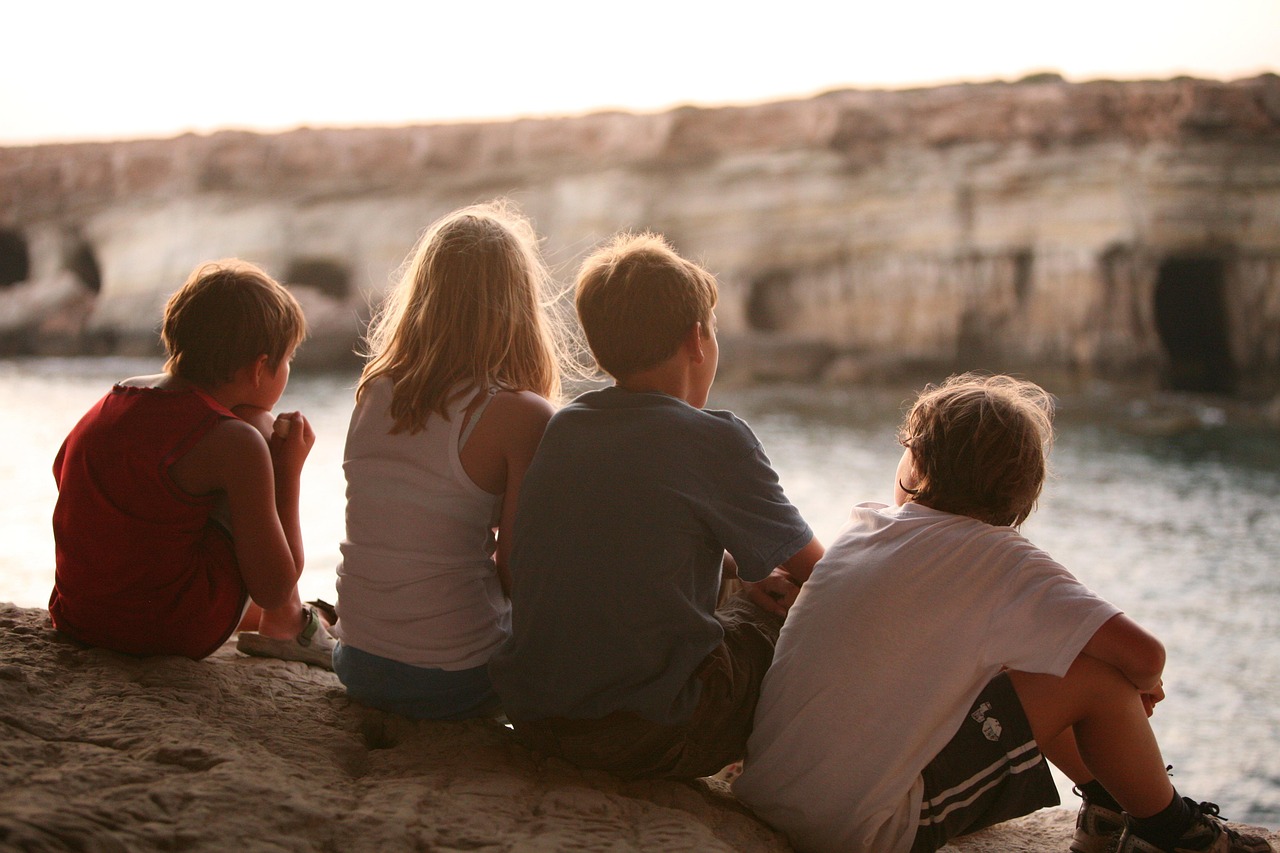
Age-Appropriate Platforms
When it comes to ensuring that our young children have a safe and enjoyable experience on social media, one of the most critical steps is to choose . Not all social media is created equal; some are specifically designed with children in mind, offering a safer environment that fosters creativity and social interaction. Imagine sending your child into a playground filled with friendly kids, fun games, and no bullies—this is exactly what age-appropriate platforms aim to achieve in the digital world.
Many popular social media platforms cater to a younger audience, providing a space where children can express themselves while being shielded from the darker sides of the internet. For instance, platforms like Kidzworld and Club Penguin are crafted to ensure that children can interact with their peers in a controlled environment. These platforms often have strict moderation policies in place to prevent cyberbullying and inappropriate content, making them a safer choice for our little ones.
Moreover, it’s essential to consider the developmental stage of your child when selecting a platform. Younger children may benefit more from platforms that emphasize creativity and learning, such as YouTube Kids, which curates content specifically for children and includes parental controls to help manage what they can view. In contrast, older children might be ready for more interactive platforms like Instagram or Snapchat, but only with proper guidelines and supervision from parents. The goal is to ensure that as your child grows, their online experiences evolve in a way that is both safe and age-appropriate.
To help you navigate this landscape, here’s a quick comparison of some popular platforms:
| Platform | Age Group | Features | Safety Measures |
|---|---|---|---|
| Kidzworld | 8-16 years | Games, forums, and chat | Moderated chats, user reporting |
| YouTube Kids | Under 13 years | Videos, educational content | Parental controls, curated content |
| Club Penguin | 6-14 years | Games, virtual world | Moderated interactions, parental controls |
| Facebook Messenger Kids | Under 13 years | Messaging, video calls | Parental approval required, limited features |
In conclusion, selecting the right social media platform is a vital step in keeping your children safe while they explore the online world. By focusing on age-appropriate platforms, you can provide them with a space to learn, create, and interact with others without the risks associated with more open social media sites. Remember, as a parent, your involvement and guidance are key to navigating this digital playground.
- What age is appropriate for children to start using social media? It varies by child, but many platforms require users to be at least 13 years old. Always assess your child’s maturity and understanding before allowing them to join.
- How can I monitor my child's social media use? Use parental control tools, regularly check their profiles, and maintain open communication about their online activities.
- What should I do if my child encounters cyberbullying? Encourage them to talk to you about it, document the incidents, and report them to the platform.

Popular Platforms for Kids
When it comes to keeping our children safe on social media, one of the most effective strategies is to guide them towards age-appropriate platforms. These platforms are specifically designed with children in mind, creating a safer environment where they can interact, learn, and express themselves without the risks commonly associated with mainstream social media. For example, platforms like Kidzworld and GoNoodle not only provide a space for social interaction but also incorporate educational content that can enrich a child's online experience.
Kidzworld, for instance, is a vibrant social network that allows kids to create profiles, engage in forums, and share their thoughts on various topics, all while ensuring content is moderated to keep it safe. Similarly, GoNoodle focuses on promoting physical activity through fun videos and games, making it a great choice for parents who want their children to have a more active and engaging online experience. In addition, platforms like Roblox offer a unique blend of gaming and social interaction, where children can create their own worlds and play with friends in a controlled, imaginative environment.
It's important to note that while these platforms are generally safer, parents should still maintain an active role in their children's online activities. Regular discussions about their experiences on these platforms can help parents stay informed about their children's interactions and the content they are exposed to. Moreover, encouraging children to explore these platforms in a supervised manner can foster a sense of security and trust, enabling them to enjoy the benefits of social media while minimizing potential risks.
In summary, selecting the right social media platforms for kids is crucial. By opting for platforms designed for younger audiences, parents can ensure that their children engage with content that is not only appropriate but also enriching. Remember, the goal is to create a positive online experience that encourages creativity, social skills, and a sense of community, all while keeping safety at the forefront.
- What age is appropriate for children to start using social media?
Most experts suggest that children should be at least 13 years old before using mainstream social media platforms. However, age-appropriate platforms can be suitable for younger children. - How can I monitor my child's social media activity?
Regularly check in on their profiles, discuss their online interactions, and use parental control tools to help keep their activities in check. - What should I do if my child encounters inappropriate content?
Encourage them to come to you immediately. Teach them how to report such content and reassure them that they won’t get in trouble for it. - How can I help my child understand online privacy?
Discuss the importance of privacy settings and personal information. Show them how to adjust their settings on different platforms.

Monitoring Usage
In today’s digital age, keeping an eye on your child's social media usage is not just a good idea; it’s essential. With the vast array of platforms available, children can easily find themselves in situations that may not be suitable for their age. Regularly monitoring their online activities helps parents stay informed about their children's interactions, the content they consume, and the friends they make. Think of it like being a guide on a thrilling adventure—you're there to ensure they navigate safely through the woods of the internet.
One effective way to monitor usage is by setting up a shared family account or using parental control apps that allow you to track their activity without invading their privacy. These tools can provide insights into what your children are doing online, helping you identify any potential issues early on. For instance, if you notice your child spending excessive time on a particular app or interacting with unfamiliar users, it might be time for a conversation.
Additionally, establishing a routine check-in can be beneficial. This could be as simple as a weekly chat where your child shares their favorite posts or experiences from their social media interactions. Encourage them to show you their profiles and discuss the content they engage with. This not only helps you monitor their usage but also fosters a sense of trust and open communication between you and your child. Remember, it’s not about policing their every move but rather guiding them in making safe choices.
Lastly, consider creating a usage agreement that outlines acceptable behavior and the boundaries of social media use. This agreement can include:
- Time limits for daily usage
- Types of content that are appropriate
- Guidelines for interacting with others online
By laying down these ground rules, you empower your child to make wise decisions while giving them the freedom to explore the digital world responsibly. It's all about balance—ensuring they enjoy the benefits of social media while being protected from its potential pitfalls.
Q: How can I start monitoring my child's social media usage?
A: Begin by having open conversations about social media and the platforms they use. Consider using parental control apps and establish a routine for checking in on their activities.
Q: What should I do if I find inappropriate content on my child's profile?
A: Discuss the content with your child and explain why it is inappropriate. Encourage them to report it and reinforce the importance of maintaining a safe online environment.
Q: How can I balance monitoring with my child's privacy?
A: Strive for a balance by involving your child in discussions about monitoring. Make it clear that your goal is to keep them safe, not to invade their personal space.
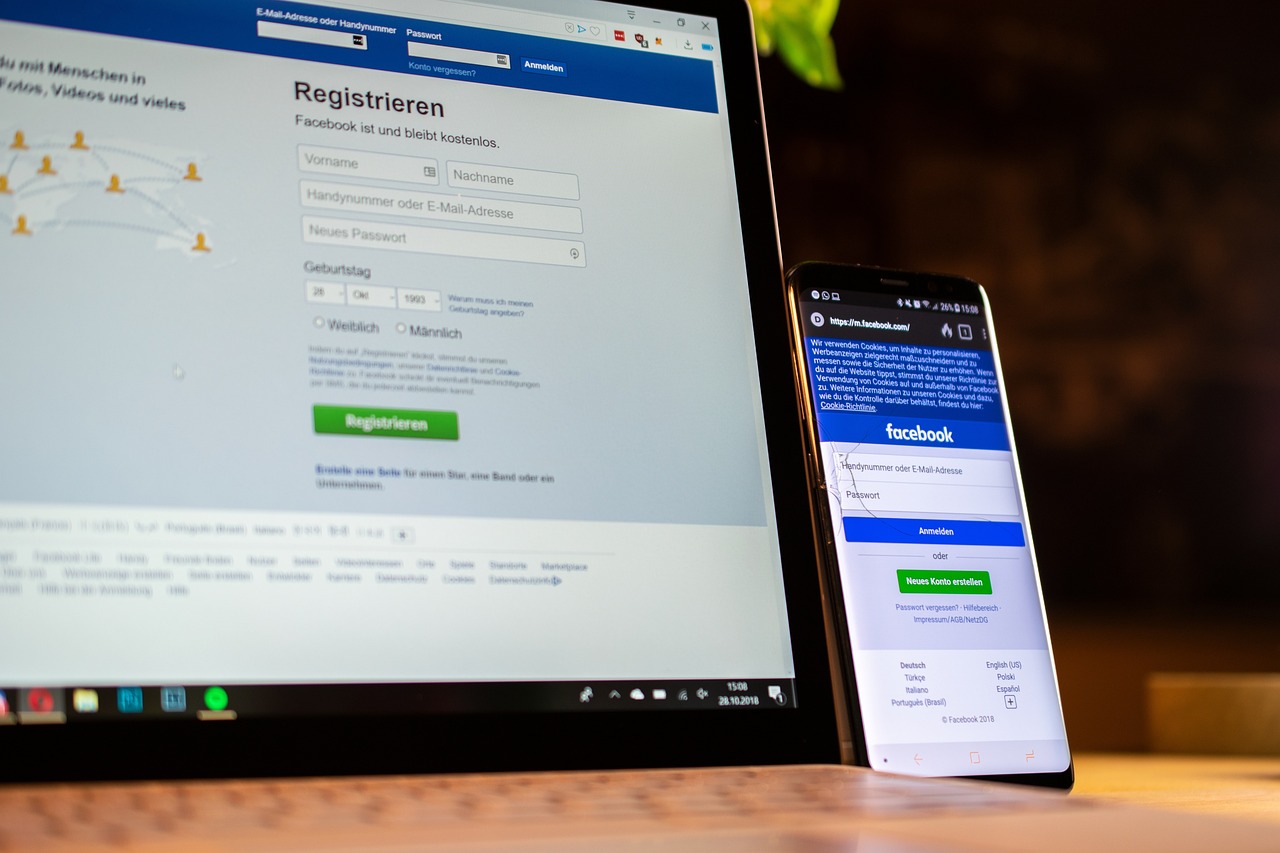
Encouraging Open Communication
When it comes to keeping young children safe on social media, one of the most effective strategies is to encourage open communication. This means creating an environment where kids feel comfortable sharing their online experiences without fear of judgment. Think of it like building a bridge; the more solid the foundation, the easier it is for kids to cross over and share their thoughts and feelings with you.
Start by asking your child about their day, and gradually steer the conversation towards their online activities. Questions like, “What’s the coolest thing you saw on social media today?” or “Have you made any new friends online?” can open the door to deeper discussions. It’s essential to approach these conversations with a non-threatening attitude. If children sense that they might get in trouble for sharing something, they may choose to keep things to themselves, which can lead to bigger problems down the road.
Additionally, consider setting aside regular times to discuss social media and technology use. This could be during dinner or while driving to school. Consistency is key! By making these discussions a routine part of your lives, you signal to your child that their online experiences are important to you. This proactive approach not only helps parents stay informed but also empowers children to express their feelings about their online interactions.
Moreover, it's vital to teach children that they can come to you with any issues they encounter online. Whether it’s a mean comment from a peer or something they stumbled upon that made them uncomfortable, assuring them that you won’t overreact can help them feel safe. Here are some points to consider when fostering this open communication:
- Listen Actively: When your child speaks, give them your full attention. This shows that you value their opinions and feelings.
- Validate Their Feelings: Let them know that it's okay to feel upset or confused about something they saw online.
- Share Your Experiences: Sometimes, sharing your own stories about navigating the internet can help children relate and feel more comfortable.
Remember, the goal is not just to monitor their social media use, but to create a trusting relationship where they feel they can share anything with you. This way, they are more likely to come to you when they encounter something troubling. Ultimately, fostering open communication can be the key to ensuring that your child has a safer and more positive experience on social media.
Q1: How can I start a conversation about social media with my child?
A1: Begin with casual questions about their day or what they enjoy online. Gradually introduce topics related to social media usage.
Q2: What if my child doesn't want to talk about their online experiences?
A2: Respect their privacy, but keep the lines of communication open. Let them know you're available whenever they feel ready to talk.
Q3: How can I make discussions about social media more engaging?
A3: Use real-life examples or stories from your own experiences. This makes the conversation relatable and shows that you understand the digital world.
Q4: What should I do if my child encounters something inappropriate online?
A4: Encourage them to come to you immediately. Discuss the incident calmly and help them understand how to handle such situations in the future.
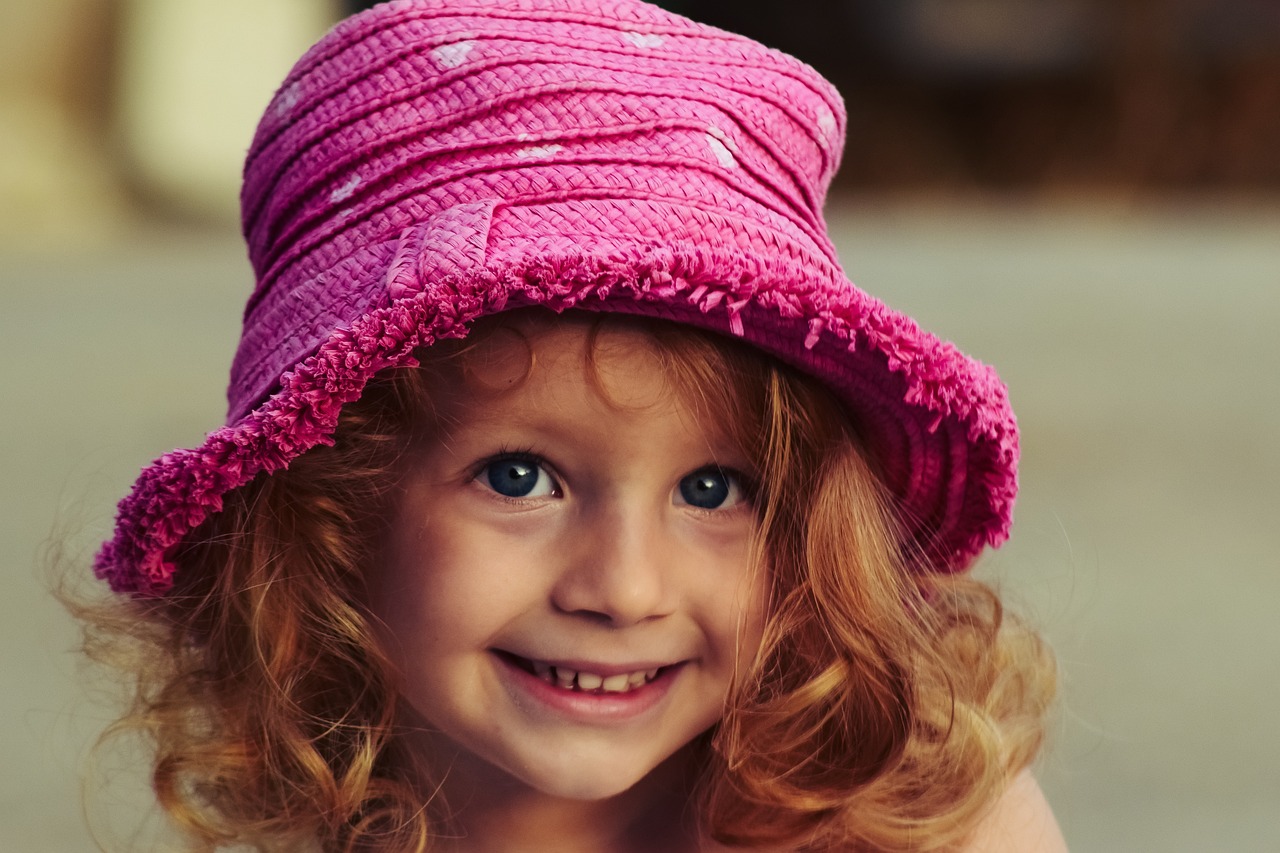
Teaching Digital Literacy
In today’s digital age, teaching digital literacy to young children is more important than ever. With the vast amount of information available online, children need to learn how to navigate this digital landscape safely and responsibly. Digital literacy encompasses a range of skills, from understanding how to use technology effectively to being able to critically evaluate the information they encounter. It’s not just about knowing how to operate a device; it’s about understanding the implications of their online actions and the content they consume.
One of the fundamental aspects of digital literacy is the ability to identify credible sources of information. Children should be taught to ask questions like, “Who wrote this?” and “What is the purpose of this content?” This critical thinking approach will help them discern fact from fiction, especially in an era where misinformation spreads like wildfire. For instance, when they come across a sensational headline, encourage them to dig deeper and verify the information through reliable sources. This skill is not just useful for social media; it can also be applied in academic settings and everyday life.
Moreover, understanding privacy settings on social media platforms is crucial for young users. Kids should be educated about the importance of keeping their personal information private and knowing who can see their posts. By taking the time to explore the privacy settings together, parents can empower their children to take control of their online presence. A simple table outlining privacy settings across various platforms can be a helpful reference:
| Platform | Privacy Setting Options |
|---|---|
| Friends only, Public, Custom | |
| Private account, Public account | |
| Snapchat | My Friends, Custom, Everyone |
| YouTube | Private, Unlisted, Public |
Additionally, discussing the concept of digital footprints is essential. Children need to understand that everything they post online leaves a trace that can be difficult to erase. This awareness can guide them in making wiser choices about what they share. For example, you might say, “Imagine if everything you said in school was recorded and could be seen by anyone. Would you still say those things?” This analogy helps them grasp the permanence of their online actions.
Finally, fostering an environment where children feel comfortable asking questions about what they see online is vital. Encourage them to share their thoughts about content they encounter, whether it’s a meme, a news article, or a viral video. This open dialogue not only strengthens their critical thinking skills but also allows parents to address any misconceptions or concerns that may arise. Remember, the goal is to create a safe space where children feel empowered to explore the digital world while also knowing they can turn to you for guidance.
- What is digital literacy? Digital literacy refers to the ability to find, evaluate, and communicate information in various digital formats.
- Why is it important to teach children about digital literacy? It helps children navigate the online world safely, recognize misinformation, and protect their privacy.
- How can I teach my child about digital footprints? Discuss the permanence of online actions and use relatable analogies to illustrate the concept.
- What are some reliable sources for teaching digital literacy? Consider educational websites, online courses, and resources from reputable organizations focused on digital safety.
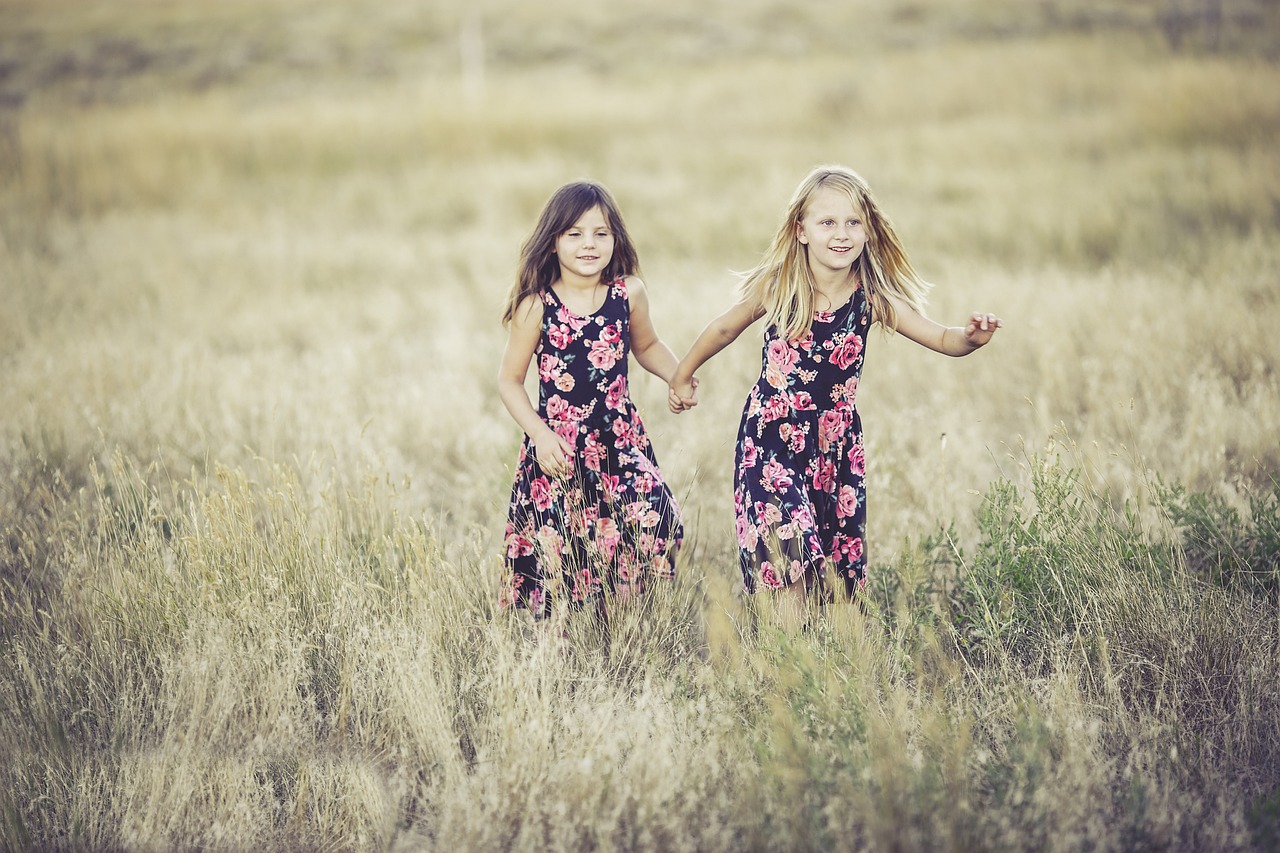
Identifying Fake News
In today's digital age, where information is just a click away, has become a crucial skill for everyone, especially for young children who are still developing their critical thinking abilities. It's not just about spotting a misleading headline; it's about understanding the nuances of information and recognizing that not everything online is true. Imagine teaching your child to navigate a vast ocean of information, where some waves are genuine and others are just deceptive ripples. This skill is essential for ensuring they can swim safely in the digital world.
First and foremost, children should learn to ask critical questions about the content they encounter. Here are a few guiding questions that can help:
- Who created this content? Understanding the source is crucial. Is it from a reputable news organization or a random blog?
- What is the purpose of this information? Is it to inform, entertain, persuade, or mislead?
- Are there other sources that confirm this information? Cross-referencing with multiple sources can provide a clearer picture.
Additionally, teaching children about the common characteristics of fake news can be incredibly beneficial. Fake news often includes sensationalized headlines, lacks credible sources, or is designed to provoke strong emotional reactions. By recognizing these traits, children can become more discerning consumers of information. For instance, if a headline seems too outrageous to be true, it probably is. Encourage your child to pause and think before sharing or reacting to such content.
Another effective strategy is to familiarize children with various fact-checking websites. Websites like Snopes, FactCheck.org, and PolitiFact are excellent resources for verifying claims and debunking myths. By showing them how to use these tools, you empower them to take control of their information consumption. It's like giving them a treasure map that leads to the truth in a sea of misinformation.
Ultimately, fostering an environment where children feel comfortable discussing what they encounter online is key. Encourage them to share their thoughts on news stories and engage in conversations about what they find. This not only enhances their ability to identify fake news but also promotes a sense of community and support. Remember, the goal is not just to protect them but to equip them with the skills they need to thrive in a digital world filled with information.
- What is fake news? Fake news refers to misinformation or disinformation presented as news, often designed to mislead readers.
- How can I help my child identify fake news? Teach them to ask critical questions about the content and use fact-checking websites.
- Why is it important to recognize fake news? Recognizing fake news helps prevent the spread of misinformation and promotes informed decision-making.
- What are some signs of fake news? Sensational headlines, lack of credible sources, and emotional manipulation are common signs of fake news.

Understanding Privacy Settings
When it comes to social media, one of the most crucial aspects that parents must teach their children is the importance of privacy settings. These settings are like a digital shield, protecting your child's personal information from prying eyes. Imagine walking through a crowded street; you wouldn't want everyone to know your name, where you live, or what school you attend, right? Similarly, online, privacy settings help control who gets to see what. Educating children about these settings empowers them to take charge of their online presence.
First off, let’s break down the significance of these settings. Each social media platform has its own set of privacy options, allowing users to customize who can view their profiles, posts, and personal information. For instance, on platforms like Facebook, users can choose to make their profiles public, friends-only, or even limit visibility to specific people. This is crucial for young users who may not fully grasp the implications of sharing personal details online.
Moreover, it’s essential to regularly review and update these settings. Just like you would check your locks before leaving home, checking privacy settings ensures that your child’s online safety is maintained. Encourage your child to go through their settings periodically, especially after any major updates to the platform, as these changes can sometimes reset privacy preferences.
To help illustrate how privacy settings work, here’s a simple table that outlines common privacy settings found on popular social media platforms:
| Platform | Common Privacy Settings | Recommended Setting for Kids |
|---|---|---|
| Profile visibility, friend requests, post visibility | Friends Only | |
| Account visibility, comment controls | Private Account | |
| Snapchat | Who can see stories, who can contact | My Friends |
| TikTok | Account privacy, who can comment | Private Account |
In addition to understanding the settings, it’s vital for children to know how to adjust them. Walk them through the process together. Hands-on practice not only reinforces learning but also opens up avenues for discussion about online safety. Ask questions like, “Who do you think should see your posts?” or “What do you think happens if you make your profile public?” These discussions can lead to greater awareness and responsibility.
Lastly, remind your child that privacy settings are not a one-time fix. Just as the world around us changes, so do online interactions. Encourage them to stay informed about new features and updates from the platforms they use. By fostering a sense of responsibility and awareness regarding privacy settings, you're not just protecting your child; you're equipping them with the tools they need to navigate the digital landscape safely.
- What are privacy settings? Privacy settings are options on social media platforms that allow users to control who can see their personal information, posts, and interactions.
- Why are privacy settings important for kids? They help protect children from sharing personal information with strangers and reduce the risk of cyberbullying and unwanted attention.
- How often should we check privacy settings? It’s a good practice to review privacy settings at least once every few months or after any significant updates to the platform.
- Can privacy settings completely protect my child online? While they significantly enhance safety, it’s essential to combine them with open communication and education about online behavior.
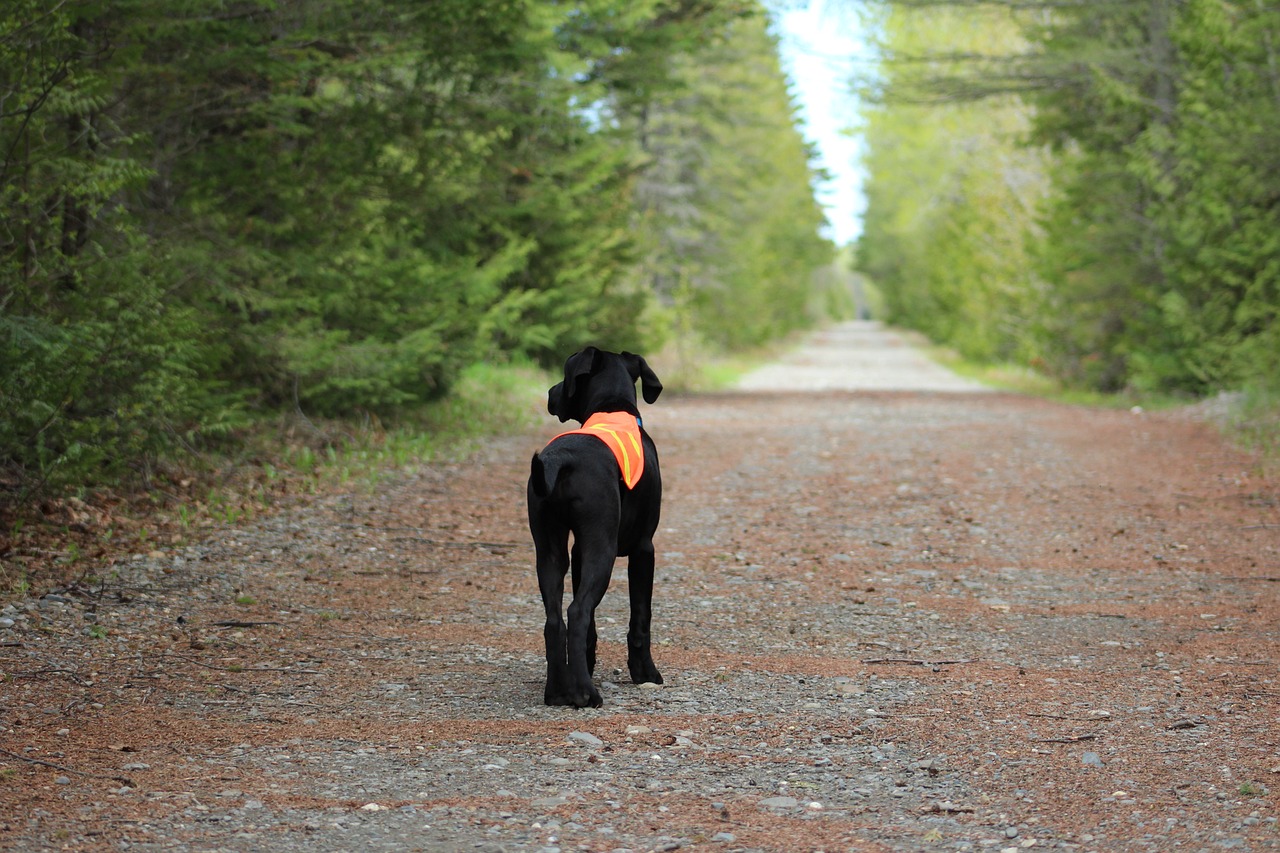
Promoting Positive Online Behavior
In today's digital age, where social media is an integral part of children's lives, promoting positive online behavior is more important than ever. It's not just about keeping them safe; it's about teaching them how to be responsible and respectful digital citizens. Think of the online world as a vast playground—just like in a physical playground, children need to learn the rules of engagement to play safely and happily. So, how can we help them navigate this complex landscape?
First and foremost, it’s essential to encourage empathy and kindness in their online interactions. This means teaching children that behind every profile is a real person with feelings. They should understand that their words and actions can have a significant impact on others. For instance, a simple comment can either uplift someone or hurt them deeply. Parents can facilitate discussions around this by sharing stories or examples, perhaps even discussing current events where online behavior had real-world consequences.
Modeling good behavior is another key aspect. Children often emulate what they see, so parents should strive to demonstrate respectful communication and responsible social media use themselves. When children observe their parents engaging positively online—like sharing uplifting content, responding kindly to others, and avoiding negative interactions—they are more likely to mirror those actions. It’s like teaching them to ride a bike; they need to see how it’s done before they can do it themselves.
Moreover, it’s vital to teach children how to recognize and report inappropriate content. This not only empowers them but also fosters a sense of responsibility. By giving them the tools to identify harmful material, children can learn to act rather than react. Explain to them the process of reporting content on various platforms and encourage them to speak up when they see something that doesn’t sit right with them. This proactive approach helps create a safer online environment for everyone.
To further reinforce these teachings, consider creating a family social media contract. This can outline acceptable online behavior, the importance of privacy, and the steps to take when encountering negative experiences. Having a written agreement serves as a constant reminder of the values your family upholds regarding online interactions. Here’s a simple example of what that contract might include:
| Guideline | Description |
|---|---|
| Respect Others | Always treat others with kindness and respect, just like you would in person. |
| Think Before You Post | Consider how your words might affect others before you share something online. |
| Report Inappropriate Content | If you see something that makes you uncomfortable, tell a parent or report it. |
| Limit Screen Time | Balance online activities with offline play and family time. |
Encouraging children to be positive online citizens isn’t a one-time conversation; it’s an ongoing dialogue. Regularly check in with them about their online experiences. Ask open-ended questions like, “What did you see on social media today?” or “How did that post make you feel?” This not only shows that you care but also opens the door for them to share any concerns they might have.
In conclusion, promoting positive online behavior is a shared responsibility between parents and children. By fostering a culture of respect, empathy, and open communication, we can help our children navigate the digital world with confidence and integrity. Remember, the goal is not just to keep them safe but to empower them to be a force for good in the online community.
- How can I encourage my child to be kind online? Start by discussing the importance of empathy and sharing examples of positive interactions.
- What should I do if my child encounters cyberbullying? Encourage them to talk to you, document the incidents, and report it to the platform.
- Are there apps that help monitor my child's online behavior? Yes, several parental control apps can help you keep track of your child's activities on social media.

Modeling Good Behavior
When it comes to keeping young children safe on social media, one of the most effective strategies is for parents to model good behavior. Children are like sponges; they absorb everything around them, especially from their parents. If you want your kids to engage positively online, you have to show them what that looks like! This means practicing what you preach. Are you posting respectful comments? Are you avoiding heated arguments in public forums? Your online actions set the standard for your children.
Start by having regular family discussions about social media usage. Talk about your own experiences, both positive and negative, so your children can learn from them. For instance, share a time when you encountered a troll online and how you handled it. This not only teaches them how to respond to negativity but also shows that everyone faces challenges online. You could even create a family agreement that outlines acceptable online behavior, which everyone can sign. This makes it a collective commitment, reinforcing the idea that good behavior is a family value.
Additionally, you can incorporate the following practices into your daily life:
- Show Empathy: When engaging in discussions, always consider the feelings of others. This teaches children to be kind and understanding.
- Be Authentic: Share your genuine self online. Encourage your kids to do the same, showing them that it's okay to be vulnerable and honest.
- Respect Privacy: Always ask for permission before sharing pictures or stories about your children online. This instills a sense of respect for personal boundaries.
Moreover, it’s essential to discuss the importance of digital footprints. Explain to your children that everything they post online can have lasting effects. Help them understand that their online presence is a reflection of who they are. You might say, “Imagine if a future employer looks at your social media profile; what do you want them to see?” This kind of analogy can make the concept of digital footprints more relatable and impactful.
By modeling good behavior, you’re not just teaching your children how to interact on social media; you’re also helping them build a strong foundation of values that will guide them throughout their lives. Remember, kids learn best through observation. So, if you want them to be responsible digital citizens, you need to embody those qualities yourself. It’s a powerful way to ensure that they not only understand the rules but also embrace them wholeheartedly.
Q: How can I talk to my child about social media without making them feel defensive?
A: Approach the conversation with curiosity rather than judgment. Ask open-ended questions about their experiences and listen actively. This fosters a safe space for dialogue.
Q: What if my child encounters cyberbullying?
A: Encourage them to come to you immediately. Discuss strategies for handling the situation, such as reporting the behavior and blocking the bully. Reassure them that they are not alone.
Q: How can I ensure my child is using age-appropriate platforms?
A: Research various social media platforms and their age requirements. Discuss these options with your child to help them understand why certain platforms are more suitable than others.
Q: Should I monitor my child's social media accounts?
A: While it's important to keep an eye on their activities, it's equally crucial to respect their privacy. Discuss boundaries and agree on the level of monitoring that feels comfortable for both of you.
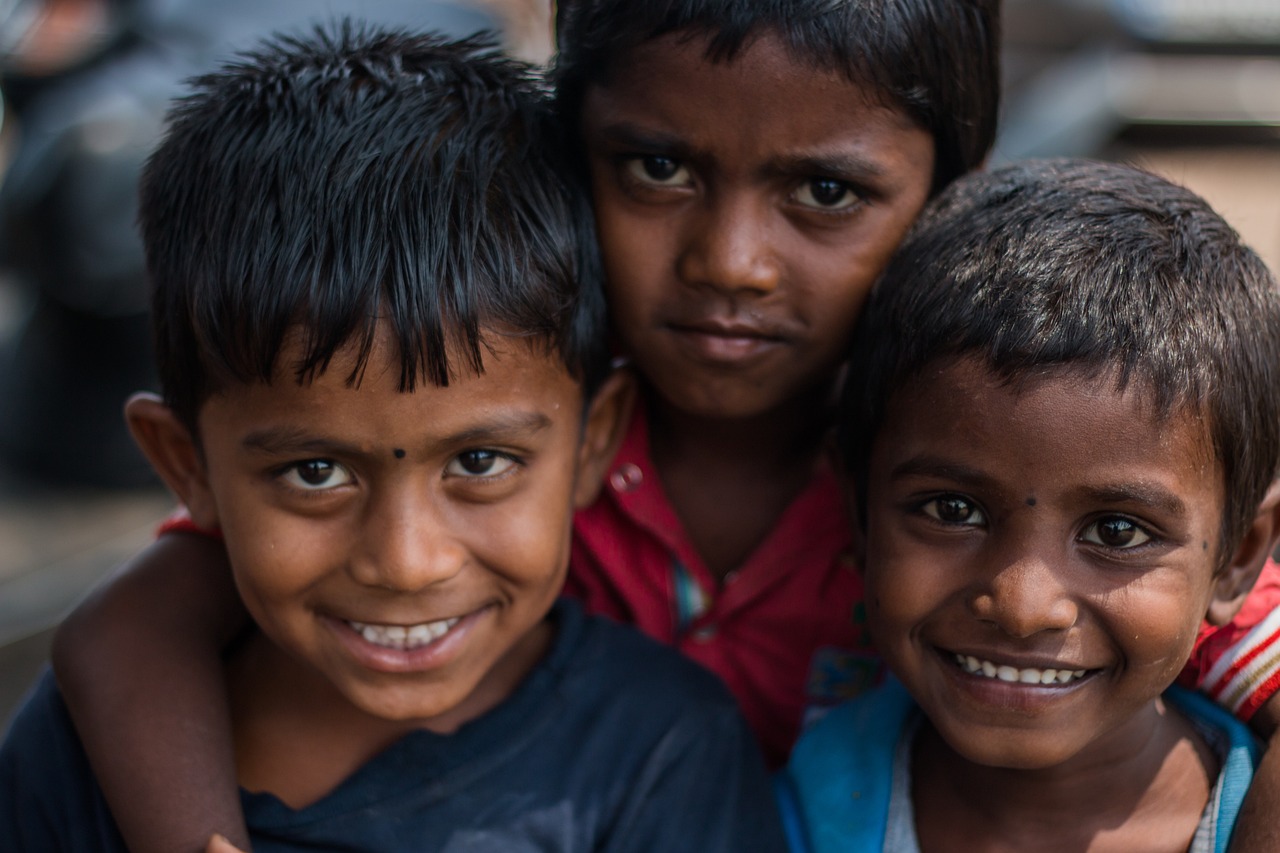
Recognizing and Reporting Inappropriate Content
In today's digital landscape, children are likely to encounter a variety of content online, some of which may not be suitable for their age. It's essential for both parents and children to understand how to recognize and report inappropriate content effectively. This knowledge not only empowers children but also promotes a safer online environment. So, what exactly constitutes inappropriate content? It can range from explicit images and hate speech to cyberbullying and scams. By teaching children to identify these elements, we equip them with the tools they need to navigate social media safely.
To help children recognize inappropriate content, parents can start by discussing the different types of content they might encounter. For instance, explicit images or videos that depict violence, sexual content, or drug use should be flagged immediately. Additionally, children should be made aware of cyberbullying, which can manifest as hurtful comments or messages directed at them or their peers. By fostering an open dialogue, parents can encourage their children to share their experiences and feelings regarding what they see online.
Moreover, it's crucial to explain the process of reporting inappropriate content. Most social media platforms have built-in tools for reporting harmful material, and children should be familiar with these features. For example, they can use the following steps:
- Identify the content: Encourage children to recognize what is inappropriate.
- Use the reporting feature: Show them how to locate the report button, which is usually represented by three dots or a flag icon.
- Provide context: Explain the importance of including a brief description of why they are reporting the content.
- Follow up: Encourage them to check back to see if any action was taken, reinforcing the importance of accountability.
Additionally, parents should be proactive in monitoring their children's online interactions. Regular discussions about their social media usage can help identify any potential issues before they escalate. If a child expresses discomfort about something they saw online, it's vital to take their feelings seriously and address the situation promptly. This approach not only protects children but also builds their confidence in communicating openly with their parents.
Finally, reinforcing the idea that reporting is a responsibility can help children understand that they are part of a larger community. Just as they would alert a teacher about bullying in school, they should feel empowered to take action against inappropriate content online. By instilling these values, we cultivate a generation of responsible digital citizens who are not only aware of the dangers but also equipped to combat them.
Q: What should I do if my child encounters inappropriate content?
A: Encourage your child to come to you immediately. Discuss what they saw and help them report it using the platform's reporting tools.
Q: How can I monitor my child's social media activity?
A: Regularly check in with your child about their online interactions and consider using parental control tools to help manage their social media use.
Q: What are some signs that my child might be experiencing cyberbullying?
A: Changes in behavior, withdrawal from friends, or reluctance to use their devices can be indicators of cyberbullying.
Q: Are there specific platforms that are safer for children?
A: Yes, platforms like Kidzworld and Kiddle are designed with children in mind, offering a safer online environment.
Frequently Asked Questions
- What are the main risks of children using social media?
Children face several risks on social media, including cyberbullying, exposure to inappropriate content, and privacy issues. These risks can significantly impact their emotional and mental well-being, making it essential for parents to stay informed and proactive.
- How can I establish guidelines for my child's social media use?
Establishing guidelines involves having open conversations with your child about acceptable online behavior. Set clear time limits and discuss the type of content they can share or engage with. This helps them understand the boundaries and promotes responsible use.
- What are some age-appropriate social media platforms for kids?
Platforms like Kidzworld, PopJam, and Grom Social are designed specifically for children, offering a safer environment. These platforms provide engaging content while minimizing risks associated with traditional social media.
- How often should I monitor my child's social media usage?
Regular monitoring is key! Aim to check in on their social media activities at least weekly. This allows you to stay informed about their interactions and identify potential issues early on.
- Why is open communication important regarding social media?
Open communication fosters trust. When children feel comfortable discussing their online experiences, they are more likely to share any concerns with you. It creates a safe space for them to talk about both positive and negative interactions.
- How can I teach my child about digital literacy?
Start by explaining the importance of critically evaluating online content. Encourage them to question the credibility of sources and help them learn to identify fake news. This empowers them to make informed decisions while navigating social media.
- What are privacy settings, and why should my child understand them?
Privacy settings allow users to control who can see their profiles and personal information. Teaching your child about these settings is crucial for protecting their personal information and ensuring they understand the importance of online privacy.
- How can I promote positive online behavior in my child?
Model good behavior yourself! Demonstrate respectful communication and responsible use of social media. Discuss the importance of kindness and empathy in their online interactions, helping them cultivate a positive digital community.
- What should my child do if they encounter inappropriate content?
Teach them how to recognize and report inappropriate content. Empowering them to take action when they see harmful material promotes a safer online environment and encourages them to be proactive in protecting themselves and others.















